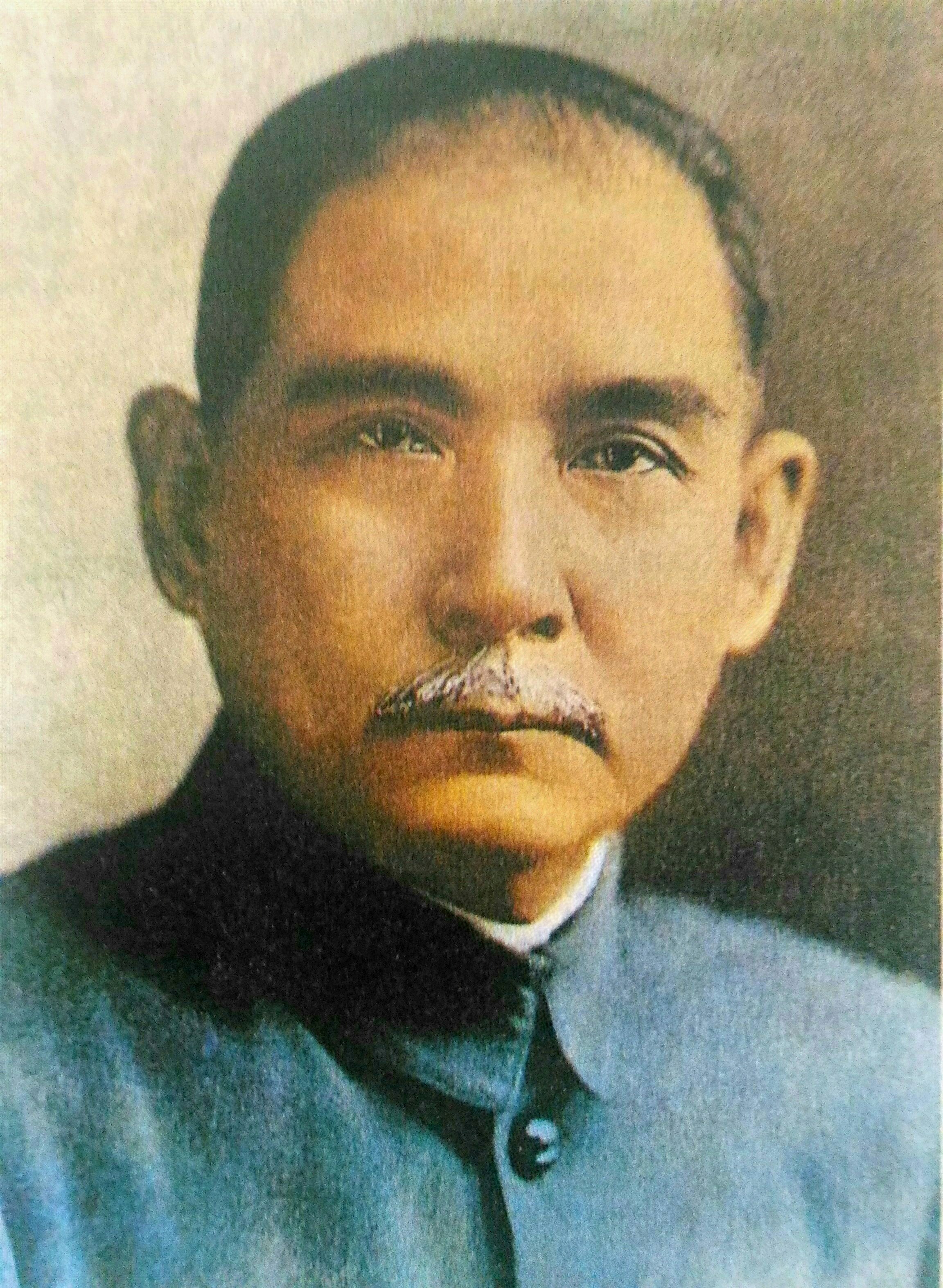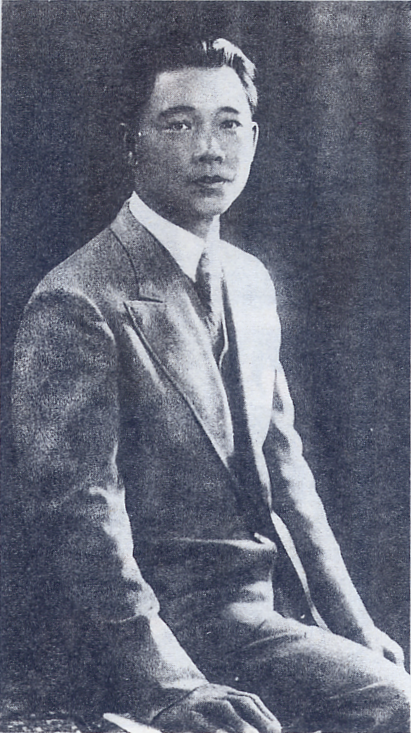|
Yu Xuezhong
Yu Xuezhong (; 1890–1964) was a general in the armed forces of the Republic of China during World War II, and later a pro- Communist politician in the People's Republic of China, after Mao Zedong took power. Yu was born in Penglai, Shandong. His father was also a military officer, serving in the Qing Imperial Army. Yu graduated from the Beiyang Army Officers Academy in 1911, the final year of the Qing Dynasty, and initially was a loyalist of Yuan Shikai. After Yuan's death he joined Wu Peifu and later the Manchurian warlord Zhang Xueliang. This association was to prove important, as Yu was one of several military commanders of the Northeastern faction that favored resistance against Japan and collaboration with the Communists, and were highly distrustful of Chiang Kai-shek. Among other posts, Yu Xuezhong served as commander of the Beijing–Tianjin Garrison Headquarters (1929–1931), Governor of Hebei (1932–1935) and Governor of Gansu (1935–1937). During the Second Sino ... [...More Info...] [...Related Items...] OR: [Wikipedia] [Google] [Baidu] |
Hebei
Hebei or , (; alternately Hopeh) is a northern province of China. Hebei is China's sixth most populous province, with over 75 million people. Shijiazhuang is the capital city. The province is 96% Han Chinese, 3% Manchu, 0.8% Hui, and 0.3% Mongol. Three Mandarin dialects are spoken: Jilu Mandarin, Beijing Mandarin and Jin. Hebei borders the provinces of Shanxi to the west, Henan to the south, Shandong to the southeast, Liaoning to the northeast, and the Inner Mongolia Autonomous Region to the north. Its economy is based on agriculture and manufacturing. The province is China's premier steel producer, although the steel industry creates serious air pollution. Five UNESCO World Heritage Sites can be found in the province, the: Great Wall of China, Chengde Mountain Resort, Grand Canal, Eastern Qing tombs, and Western Qing tombs. It is also home to five National Famous Historical and Cultural Cities: Handan, Baoding, Chengde, Zhengding and Shanhaiguan. Historic ... [...More Info...] [...Related Items...] OR: [Wikipedia] [Google] [Baidu] |
Chinese People's Political Consultative Conference
The Chinese People's Political Consultative Conference (CPPCC, zh, 中国人民政治协商会议), also known as the People's PCC (, ) or simply the PCC (), is a political advisory body in the People's Republic of China and a central part of the Chinese Communist Party (CCP)'s United Front system. Its members advise and put proposals for political and social issues to government bodies. However, the CPPCC is a body without real legislative power. While consultation does take place, it is supervised and directed by the CCP. The body traditionally consists of delegates from the CCP and its front organizations, eight legally-permitted political parties subservient to the CCP, as well as nominally independent members. The CPPCC is chaired by a member of the Politburo Standing Committee of the Chinese Communist Party. In keeping with the United Front strategy, prominent non-CCP members have been included among the Vice Chairs, examples being Chen Shutong, Li Jishen and Soong Ch ... [...More Info...] [...Related Items...] OR: [Wikipedia] [Google] [Baidu] |
Revolutionary Committee Of The Chinese Kuomintang
The Revolutionary Committee of the Chinese Kuomintang (RCCK), also commonly known, especially when referenced historically, as the Left Kuomintang or Left Guomindang, is one of the eight legally recognised minor political parties in the People's Republic of China that follow the direction of the Chinese Communist Party (CCP). It was founded in January 1948, during the height of the Chinese Civil War, by members of the left wing of the Kuomintang (KMT), especially those who were against Chiang Kai-shek's policies. The first Chairman of the party was General Li Jishen, a senior Nationalist military commander who had many disputes with Chiang over the years, while Soong Ching-ling (the widow of Sun Yat-sen) was named Honorary Chairwoman. Other early leading members were Wang Kunlun, Cheng Qian, He Xiangning and Tao Zhiyue. The party claims to be the true heir of Sun Yat-sen's legacy and his Three Principles of the People. By the end of 2017, it had 131,410 members. Soong Ching- ... [...More Info...] [...Related Items...] OR: [Wikipedia] [Google] [Baidu] |
Chinese Civil War
The Chinese Civil War was fought between the Kuomintang-led government of the Republic of China and forces of the Chinese Communist Party, continuing intermittently since 1 August 1927 until 7 December 1949 with a Communist victory on mainland China. The war is generally divided into two phases with an interlude: from August 1927 to 1937, the KMT-CCP Alliance collapsed during the Northern Expedition, and the Nationalists controlled most of China. From 1937 to 1945, hostilities were mostly put on hold as the Second United Front fought the Japanese invasion of China with eventual help from the Allies of World War II, but even then co-operation between the KMT and CCP was minimal and armed clashes between them were common. Exacerbating the divisions within China further was that a puppet government, sponsored by Japan and nominally led by Wang Jingwei, was set up to nominally govern the parts of China under Japanese occupation. The civil war resumed as soon as it bec ... [...More Info...] [...Related Items...] OR: [Wikipedia] [Google] [Baidu] |
Kuomintang
The Kuomintang (KMT), also referred to as the Guomindang (GMD), the Nationalist Party of China (NPC) or the Chinese Nationalist Party (CNP), is a major political party in the Republic of China, initially on the Chinese mainland and in Taiwan after 1949. It was the sole party in China during the Republican Era from 1928 to 1949, when most of the Chinese mainland was under its control. The party retreated from the mainland to Taiwan on 7 December 1949, following its defeat in the Chinese Civil War. Chiang Kai-shek declared martial law and retained its authoritarian rule over Taiwan under the ''Dang Guo'' system until democratic reforms were enacted in the 1980s and full democratization in the 1990s. In Taiwanese politics, the KMT is the dominant party in the Pan-Blue Coalition and primarily competes with the rival Democratic Progressive Party (DPP). It is currently the largest opposition party in the Legislative Yuan. The current chairman is Eric Chu. The party originate ... [...More Info...] [...Related Items...] OR: [Wikipedia] [Google] [Baidu] |
Military Affairs Commission
The Military Affairs Commission (MAC) of the National Government, chaired by Generalissimo Chiang Kai-shek during the Second Sino-Japanese War and World War II, directed the command of the National Revolutionary Army of the Republic of China. Organizational structure It was reorganized beginning on January 17, 1938, in the following way: * Chairman - Chiang Kai-shek * Military Commissioners * Chief of the General Staff - He Yingqin ** Board of Military Operations ** Ministry of War ** Board of Military Training ** Board of Political Training ** Directorate General of Courts Martial ** Commission on Aeronautical Affairs ** Military Personnel Bureau ** Military Advisory Council * Main Office of the Military Affairs Commission * Aides Office * Investigation Statistics Bureau * Councillors Office * Commanders of Military Regions * Commander in Chief, Navy * Commander in Chief, Air Force * Rear Area Services Department * Air Defense Commanders * Garrison Commanders List of leaders ... [...More Info...] [...Related Items...] OR: [Wikipedia] [Google] [Baidu] |
Jiangsu
Jiangsu (; ; pinyin: Jiāngsū, Postal romanization, alternatively romanized as Kiangsu or Chiangsu) is an Eastern China, eastern coastal Provinces of the People's Republic of China, province of the China, People's Republic of China. It is one of the leading provinces in finance, education, technology, and tourism, with its capital in Nanjing. Jiangsu is the List of Chinese administrative divisions by area, third smallest, but the List of Chinese administrative divisions by population, fifth most populous and the List of Chinese administrative divisions by population density, most densely populated of the 23 provinces of the People's Republic of China. Jiangsu has the highest GDP per capita of Chinese provinces and second-highest GDP of Chinese provinces, after Guangdong. Jiangsu borders Shandong in the north, Anhui to the west, and Zhejiang and Shanghai to the south. Jiangsu has a coastline of over along the Yellow Sea, and the Yangtze River passes through the southern part ... [...More Info...] [...Related Items...] OR: [Wikipedia] [Google] [Baidu] |
Shandong
Shandong ( , ; ; alternately romanized as Shantung) is a coastal province of the People's Republic of China and is part of the East China region. Shandong has played a major role in Chinese history since the beginning of Chinese civilization along the lower reaches of the Yellow River. It has served as a pivotal cultural and religious center for Taoism, Chinese Buddhism and Confucianism. Shandong's Mount Tai is the most revered mountain of Taoism and a site with one of the longest histories of continuous religious worship in the world. The Buddhist temples in the mountains to the south of the provincial capital of Jinan were once among the foremost Buddhist sites in China. The city of Qufu is the birthplace of Confucius and was later established as the center of Confucianism. Confucianism developed from what was later called the Hundred Schools of Thought from the teachings of the Chinese philosopher Confucius. Shandong's location at the intersection of ancient and modern n ... [...More Info...] [...Related Items...] OR: [Wikipedia] [Google] [Baidu] |
Battle Of Wuhan
The Battle of Wuhan (武漢之戰), popularly known to the Chinese as the Defense of Wuhan, and to the Japanese as the Capture of Wuhan, was a large-scale battle of the Second Sino-Japanese War. Engagements took place across vast areas of Anhui, Henan, Jiangxi, Zhejiang, and Hubei provinces over a period of four and a half months. It was the longest, the largest, and arguably the most significant battle in the early stages of the Second Sino-Japanese War. More than one million National Revolutionary Army troops from the Fifth and Ninth War Zone were put under the direct command of Chiang Kai-shek, defending Wuhan from the Central China Area Army of the Imperial Japanese Army led by Shunroku Hata. Chinese forces were also supported by the Soviet Volunteer Group, a group of volunteer pilots from Soviet Air Forces. Although the battle ended with the eventual capture of Wuhan by the Japanese forces, it resulted in heavy casualties on both sides, as high as 1.2 million combined ... [...More Info...] [...Related Items...] OR: [Wikipedia] [Google] [Baidu] |
Battle Of Xuzhou
The Battle of Xuzhou was a military conflict between the Empire of Japan and the Republic of China (1912–49), Republic of China forces in May 1938 during the Second Sino-Japanese War. History In 1937 the North China Area Army had chased Song Zheyuan's 29th Army to the south along the Jinpu Railway (see Tianjin–Pukou Railway Operation) after his defeat in the Battle of Lugou Bridge. After Japan won the Battle of Nanjing, the North China Area Army advanced southward to establish a Japanese connection between Beijing and Nanjing, ignoring the non-expansionist policy of the Imperial General Headquarters in Tokyo. Most mechanized and air forces in eastern China were wiped out in the Battle of Shanghai, which concluded in late November 1937. Although new equipment was purchased, it had yet to be shipped. Han Fuqu, the chairman of the Shandong province, rejected orders from Chiang Kai-shek and kept retreating to preserve his force. After Qingdao was occupied in January 1938, Han's ... [...More Info...] [...Related Items...] OR: [Wikipedia] [Google] [Baidu] |






